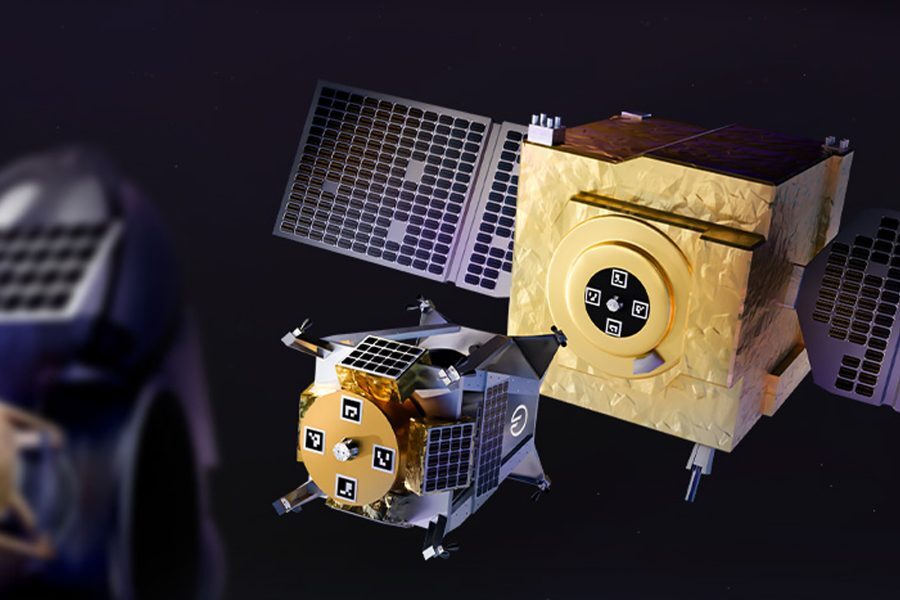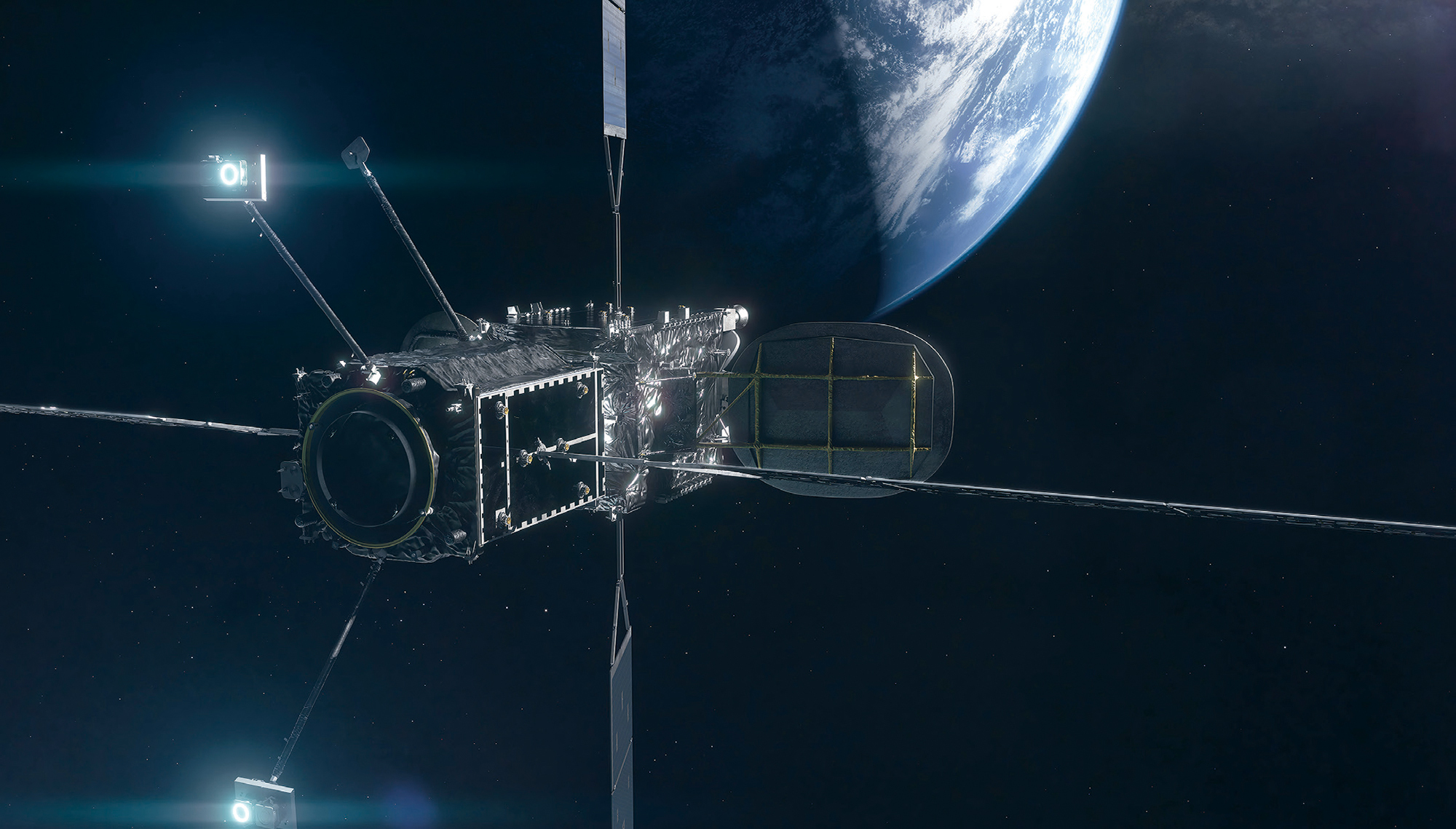25.12.2024

An artist illustration depicts an Orbit Fab on-orbit fuel shuttle, center, as it leaves its fuel station, left, and prepares to dock and refuel a satellite outfitted with the company's Rapidly Attachable Fluid Transfer Interface (RAFTI) to significantly extend satellite mission life and return on investment versus expensive, inefficient one-and-done satellite missions and servicing and debris removal operations. Orbit Fab
Military history shows that the best defense is almost always a maneuvering offense supported by solid logistics. This was true for mechanized land warfare, air combat, and naval operations since World War II. It will also be true as the world veers closer to military conflict in space.
China and Russia have each demonstrated anti-satellite missiles that can destroy satellites in space. Each has also developed various offensive capabilities that can temporarily or permanently disrupt U.S. satellites on orbit.
In response, the U.S. Space Force is investing in increased resilience, with a proliferating number of smaller, less costly satellites for communications and missile warning. But resilience can make systems more survivable; it cannot, alone, deter conflict.
Because orbits are predictable, satellites are relatively easy to attack. The ability to maneuver can mitigate that risk, but that presents another problem: Maneuver requires fuel, and fuel is limited on spacecraft because each additional ounce comes at a cost. Launch costs mean that size and weight are significant limiting factors on any spacecraft. As a result, today’s satellites carry only a limited supply of fuel. Nor are today’s satellites designed to be refueled. Once they deplete their initial reserve, they are all but dead.
This is an unnecessary design flaw that should be addressed in all future satellites. Mandating that satellites support refueling and developing tanker spacecraft and commercial service providers to deliver fuel can extend lives and revolutionize the way satellites are operated.
Air Force tanker crews revel in their motto—“Nobody kicks ass without tanker gas”—because they dramatically extend the range and duration of all refuelable aircraft. The ability to refuel in orbit would enable satellite operators to “maneuver without regret,” both to avoid potential conflict with adversary satellites and, when necessary, to hold adversary spacecraft at risk.

An artist illustration of a Northrop Grumman SpaceLogistics Mission Extension Vehicle (MEV). MEV delivers life-extension services; docking with a client satellite running low on fuel and also take over attitude and orbit maintenance. With two ongoing commercial missions (MEV-1 in 2020 and MEV-2 in 2021), SpaceLogistics is the first and only company to successfully perform on-orbit satellite servicing of commercial geostationary orbit (GEO) satellites. SpaceLogistics
U.S. Space Force and U.S. Space Command leaders are eager for this capability. U.S. Space Command boss Gen. Stephen Whiting has argued that “it is time to bring dynamic operations and on-orbit logistics and infrastructure to the space domain.”
Not being able to refuel satellites in orbit severely limits operational flexibility and empowers adversaries. It forces operators to choose between exposing satellites to risk in a game of orbital cat-and-mouse or shortening their lifespans each time they expend precious fuel.
Satellites should fly “until missions are complete, not until the fuel we launched with is depleted,” notes U.S. Space Command boss Gen. Stephen Whiting.
To date, however, Whiting’s plea remains unanswered, while China has already begun to develop its own satellite-refueling vehicle and to conduct wide-ranging satellite maneuvers.
Lt. Gen. Douglas A. Schiess, Commander of Space Forces-Space, a key operational command, says he needs spacecraft to be able to “dogfight in space.”
The Space Force has requested $16 million over five years to research on-orbit servicing and refueling. That’s a start, but it’s too little to achieve the needed results in a timely manner. More must be invested to enable change in a timely manner.
A robust investment of $200 million each year over three years can put the Space Force on track to develop an initial operational satellite refueling and sustainment capability—setting the stage to change the game in space competition. Doing so is a strategic imperative.
The Space Force has already identified a “preferred refueling interface standard” but has not yet required all future satellites to be designed for future refueling. Without investment, however, a commercial industry will never develop to do this kind of work.
Investing in on-orbit refueling capabilities is about maintaining America’s strategic advantage in space. As on land and at sea, the adage that “amateurs talk tactics, but professionals talk logistics” applies in space as well. For decades, the United States has built up logistics advantages in the air, at sea, and on the ground. The ability to maintain and sustain equipment has been among its most important force multipliers. It’s time to do follow that playbook in space, as well.
Quelle: AIR&SPACE FORCES MAGAZINE
